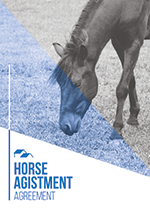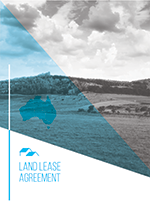Call Us -
1800 608 088


If you own agricultural farming land, then leasing that land to other farmers can be a smart move. As the Lessor / Landlord, you get the benefit of a steady income from underutilised land and your tenant has another way to expand their operation on land that presents new farming opportunities. – it’s a great win/win.
Maximising the opportunity to Lease land usually depends on the structure of the deal and your ability to foresee and plan for future issues. A written rural lease agreement provides the structure for your rural lease arrangement by reducing the potential for misunderstandings and conflict giving you peace of mind.
This page looks at a few different options for leasing rural land with agreement templates to suit the most common situations.
A “lease” is a contract where one party (the lessor or landlord) grants another party (the lessee or the tenant) the right to occupy and use a certain piece of land, in exchange for money or “rent.”
The simple act of accepting money from someone in exchange for occupying the land is said to be a verbal lease. A verbal lease is legal, binding and it automatically gives your tenant minimum rights and obligations under the law (which may not be what you want as the Landlord).
There is another problem with this type of handshake arrangement – nobody knows the specifics. There are too many details left to chance.
For instance:
As you can see, many questions can arise. A verbal lease agreement leaves most of them unanswered which can be dangerous for both you and the tenant. That is precisely why experts nearly always recommend using a written lease agreement.
A written lease agreement will clarify the fundamentals of the arrangement, protect the interests of both parties and minimise misunderstandings.
 Agistment is the placement of livestock from one farm onto another for food, water, and shelter – in return for a fee (usually cost/head/week).
Agistment is the placement of livestock from one farm onto another for food, water, and shelter – in return for a fee (usually cost/head/week).
This Horse Agistment Agreement clearly spells out the terms of the agistment to reduce the chance of a dispute arising through misunderstandings.
Both the landholder or Agistor and horse owner are aware of their responsibilities under the agistment agreement
Learn: Avoid the pitfalls when agisting horses
 Agistment is the placement of livestock from one farm onto another for food, water, and shelter – in return for a fee (usually cost/head/week).
Agistment is the placement of livestock from one farm onto another for food, water, and shelter – in return for a fee (usually cost/head/week).
Many landholders choose to do this as a way of earning extra income and / or reducing the cost of mowing or slashing.
It’s important to put the leasing arrangement in writing so that both parties understand their obligations. It reduces the likelihood that a dispute will arise through misunderstandings.
 Leasing agricultural land is a profitable option for all the parties involved.
Leasing agricultural land is a profitable option for all the parties involved.
For the farmer or “tenant”, it gives you access to land for the expansion of your enterprises without the need to incur large capital costs.
For the Landholder or “Lessor”, it means you are able to generate a steady income from the land, over the term of the lease, without having to work it yourself.
It’s important to put the leasing arrangement in writing so that both parties understand their obligations. Ideally you should do this before the tenant takes possession of the land.
Our Land Lease Agreement Template is available for each state and territory (except ACT).
 It might seem very basic, but it is vital to get the names of the entities or “parties” correct when drafting a legal document. Stating the parties formally and accurately gives you certainty that there can be NO question about the parties’ intentions later, especially if the particulars are changed or forgotten. We look at the different types of “parties” and the correct way to record the information.
It might seem very basic, but it is vital to get the names of the entities or “parties” correct when drafting a legal document. Stating the parties formally and accurately gives you certainty that there can be NO question about the parties’ intentions later, especially if the particulars are changed or forgotten. We look at the different types of “parties” and the correct way to record the information.
 Verbal agreements can be legally binding and in fact many business and personal transactions are conducted purely on a handshake. But if things go wrong, it can be very difficult to sort the matter out or to even prove the agreement existed.
Verbal agreements can be legally binding and in fact many business and personal transactions are conducted purely on a handshake. But if things go wrong, it can be very difficult to sort the matter out or to even prove the agreement existed.
 The government is set to remove the GST free status of farms and businesses sold as a going concern. Read more.
The government is set to remove the GST free status of farms and businesses sold as a going concern. Read more.